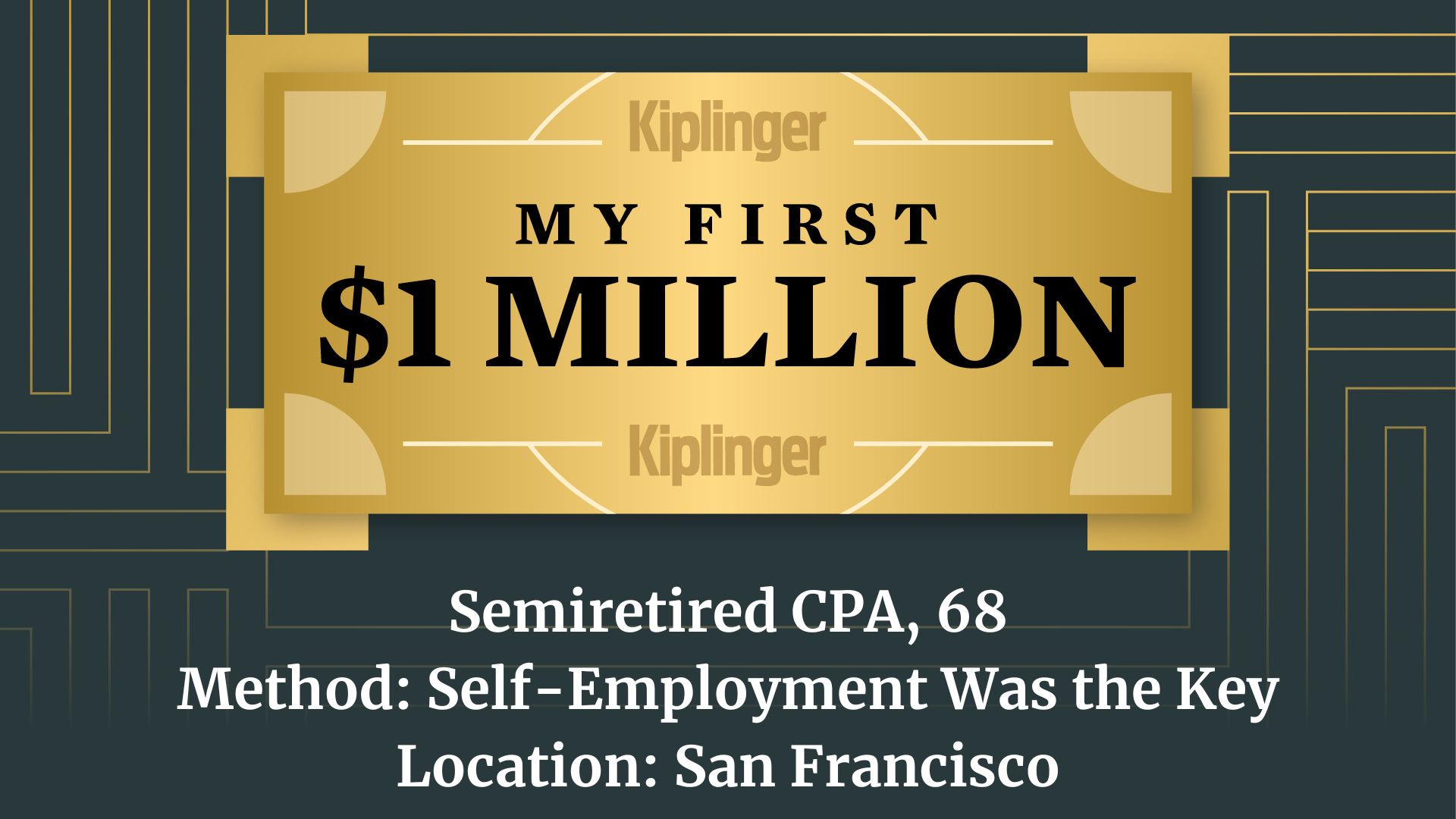Downsize Your Required Minimum Distributions
A little proactive planning now to help minimize your RMDs in the future can save you thousands of dollars in retirement.


There are so many decisions you have to make when you’re planning for retirement, it can be tempting to delay the ones that seem as though they can wait.
Take, for example, the required minimum distributions (RMDs) you must begin withdrawing from your tax-deferred investment accounts at age 70½. Dealing with the tax consequences of those withdrawals may seem a long way away when you’re in your late 50s or early 60s, but there are strategies you can put into place now that could save you thousands of dollars later.
Could You Be Headed for a $90,000 RMD?
I often meet with people who proudly tell me they have $1 million or more saved for retirement in an IRA, and I hate to be the one to burst their comfort bubble with a sad reminder that it isn’t all theirs. Uncle Sam isn’t going to put off getting his share forever. Eventually, you have to start paying taxes on that money.
From just $107.88 $24.99 for Kiplinger Personal Finance
Become a smarter, better informed investor. Subscribe from just $107.88 $24.99, plus get up to 4 Special Issues

Sign up for Kiplinger’s Free Newsletters
Profit and prosper with the best of expert advice on investing, taxes, retirement, personal finance and more - straight to your e-mail.
Profit and prosper with the best of expert advice - straight to your e-mail.
And the older you get, the more you’ll be required to withdraw. RMD percentages, which are based on your age, increase every year. At age 70½, the RMD on $1 million would be less than $40,000. At age 90, it’s almost $90,000. (Think you won’t live that long? According to the Social Security Administration, about one out of every four 65-year-olds today will live past 90, and one out of 10 will live past 95.)
Add that amount to your Social Security benefits and any pension or other income you have, and you easily could jump to a higher tax bracket. If your income exceeds a certain threshold (determined by your filing status), a percentage of your Social Security and Medicare benefits also may be considered taxable.
Two RMD-Busting Strategies
So how can you avoid RMDs? This is where proactive planning can save you.
- Take distributions before you’re forced to. After age 59½, it may make sense to begin taking penalty-free distributions from a traditional IRA, instead of waiting until you’re 70½. The goal is to manage your retirement account with small withdrawals now to avoid income spikes from your RMDs later. You want to fill the lowest tax bracket you can without bumping yourself up to the next tax bracket. To recoup the taxes paid as quickly as possible, you could use an indexed universal life (IUL) policy because of higher caps, which allows us to grow it with a safety net. Or you could put the withdrawn funds into long-term investments that will sweeten your later years — or your legacy.
- You could convert money in a traditional IRA into a Roth IRA. There are no RMDs from a Roth account while the owner is alive. You will, of course, have to pay taxes on the amount that you convert. If you start in your 60s, you’ll have plenty of time to do this in small amounts to better spread out the tax bill. Or you can do a lump-sum rollover and take a one-time tax hit. That won’t be pleasant, but going forward, your money will grow tax-free.
Most people look at RMDs as something to worry about long after they’ve decided when to stop working, when to take their Social Security benefits and other pressing, but more positive, retirement questions.
But, believe me, your future self will thank you if you put it on your list of things to talk about the next time you meet with your financial adviser.
Kim Franke-Folstad contributed to this article.
Investment advisory services offered only by duly registered individuals through AE Wealth Management, LLC (AEWM). AEWM and Core Financial, LLC are not affiliated companies. Investing involves risk, including the potential loss of principal. Neither the firm nor its agents or representatives may give tax or legal advice. Individuals should consult with a qualified professional for guidance before making any purchasing decisions. Investing involves risk, including the potential loss of principal. Any references to lifetime income generally refer to fixed insurance products, never securities or investment products. Insurance and annuity product guarantees are backed by the financial strength and claims-paying ability of the issuing insurance company. Core Financial, LLC is not affiliated with the U.S. government or any governmental agency. AW02181790
Profit and prosper with the best of Kiplinger's advice on investing, taxes, retirement, personal finance and much more. Delivered daily. Enter your email in the box and click Sign Me Up.

Philip Gordley is an independent financial adviser in Albuquerque, N.M. The president and founder of Core Financial, he has more than 35 years of experience in the insurance and investment industry and has a bachelor's degree from Quincy College. Phil has been married for 26 years to his wife, Zora, and they have two teenage daughters.
-
 10 Cheapest Places to Live in Washington
10 Cheapest Places to Live in WashingtonProperty Tax Is Washington your go-to ski destination? These counties combine no income tax with the lowest property tax bills in the state.
-
 Healthy to 100: Secrets from Countries Where Retirees Age Best
Healthy to 100: Secrets from Countries Where Retirees Age BestLongevity is a team sport, according to author Ken Stern. Here's the secret sauce for living long, healthy lives from countries like Italy and Japan.
-
 My First $1 Million: Semiretired CPA, 68, San Francisco
My First $1 Million: Semiretired CPA, 68, San FranciscoEver wonder how someone who's made a million dollars or more did it? Kiplinger's My First $1 Million series uncovers the answers.
-
 6 Overlooked Areas That Can Make or Break Your Retirement, From a Retirement Adviser
6 Overlooked Areas That Can Make or Break Your Retirement, From a Retirement AdviserIf you're heading into retirement with scattered and uncertain plans, distilling them into these six areas can ensure you thrive in later life.
-
 I'm a Wealth Adviser: These Are the 7 Risks Your Retirement Plan Should Address
I'm a Wealth Adviser: These Are the 7 Risks Your Retirement Plan Should AddressYour retirement needs to be able to withstand several major threats, including inflation, longevity, long-term care costs, market swings and more.
-
 High-Net-Worth Retirees: Don't Overlook These Benefits of Social Security
High-Net-Worth Retirees: Don't Overlook These Benefits of Social SecurityWealthy retirees often overlook Social Security. But timed properly, it can drive tax efficiency, keep Medicare costs in check and strengthen your legacy.
-
 Do You Have an Insurance Coverage Gap for Your Valuables? You May Be Surprised to Learn You Do
Do You Have an Insurance Coverage Gap for Your Valuables? You May Be Surprised to Learn You DoStandard homeowners insurance usually has strict limits on high-value items, so you should formally "schedule" these valuable possessions with your insurer.
-
 8 Practical Ways to Declutter Your Life in 2026: A Retirement 'Non-Resolution' Checklist
8 Practical Ways to Declutter Your Life in 2026: A Retirement 'Non-Resolution' ChecklistHere's how to stop wasting your energy on things that don't enhance your new chapter and focus on the things that do.
-
 To Retire Rich, Stop Chasing Huge Returns and Do This Instead, Courtesy of a Financial Planner
To Retire Rich, Stop Chasing Huge Returns and Do This Instead, Courtesy of a Financial PlannerSaving a large percentage of your income, minimizing taxes and keeping spending in check can offer a more realistic path to retiring rich.
-
 New Year, New Retirement Rules: Here's How You Can Keep Up as the Landscape Changes
New Year, New Retirement Rules: Here's How You Can Keep Up as the Landscape ChangesFor a successful modern retirement, prepare for a longer life, manage high health care costs and prioritize your social life and purpose.
-
 7 Creative Ways to Spend Less and Save More In Retirement, Courtesy of a Financial Pro
7 Creative Ways to Spend Less and Save More In Retirement, Courtesy of a Financial ProWorried you won't have enough money later in life? Try redesigning your vision of retirement, and you may find your savings go further than you thought.